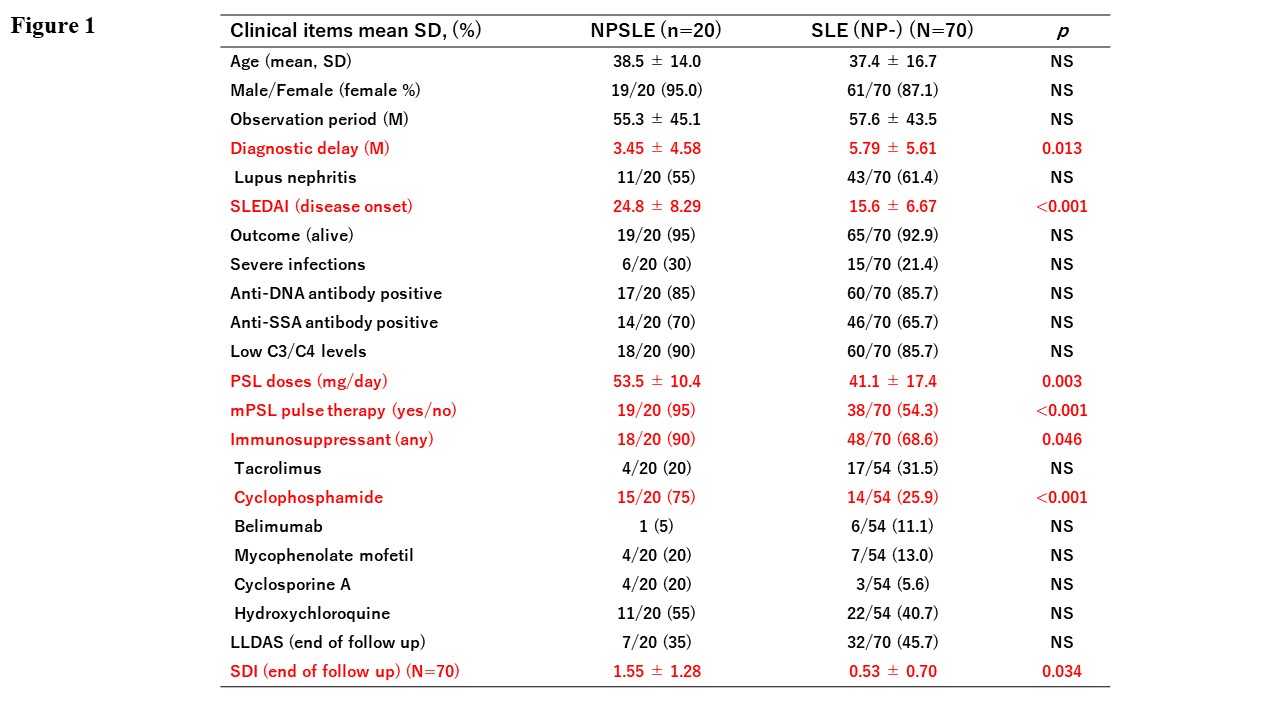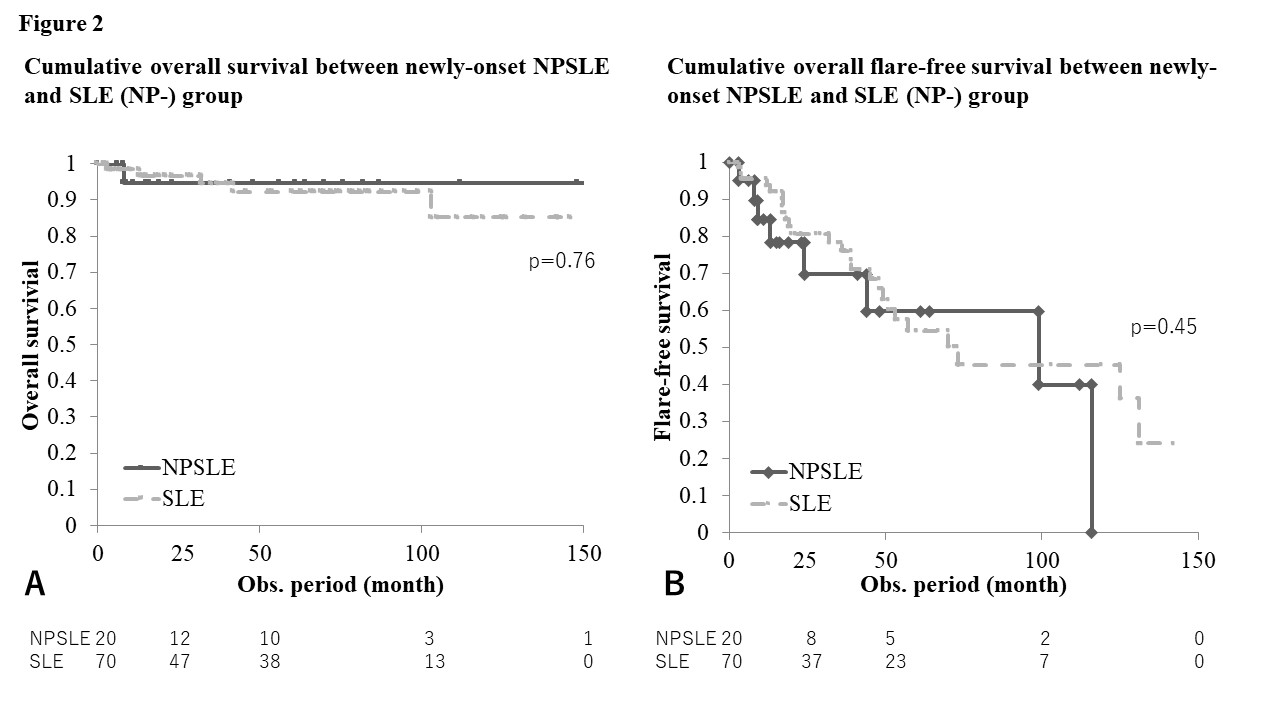Session Information
Session Type: Poster Session B
Session Time: 10:30AM-12:30PM
Background/Purpose: Although neuropsychiatric (NP) symptoms may occur in patients with SLE even in initial onset, studies regarding the distinct clinical features of SLE patients with NP symptoms upon initial onset were scarce. This study aims to investigate the clinical features and outcomes of SLE patients who had NP symptoms upon the initial onset of SLE.
Methods: This study is a retrospective, inception cohort study. Newly diagnosed SLE patients treated in the Department of Rheumatology, Fukushima Medical University Hospital between 2010 and 2022 were collected. Patients who experienced neuropsychiatric (NP) symptoms upon diagnosis of SLE were defined as the NPSLE group and its clinical features including age, sex, disease duration, SLE symptoms, laboratory data, disease activity, organ damage, and treatment were compared with normal SLE (NP-) group. Cumulative overall survival and flare-free survival were also compared between the 2 groups using Kaplan-Meier analysis. Using logistic regression analysis, we further investigated risk factors for the damage accrual in patients with SLE.
Results: Among patients treated in our department from 2010-2022, 90 newly diagnosed SLE patients were included. The mean age was 37.7 years old, and 80 patients were female (88.4%). The mean observation period was 57.1 ± 43.6 months and the mean SLEDAI score was 17.6, respectively. Among 90 patients, 20 (22.2%) showed NP symptoms in the initial disease. The comparison of clinical characteristics between the NPSLE group (20 patients) and SLE (NP-) group (70 patients) is shown in Figure 1. General characteristics were similar between the 2 groups including age, sex, SLE symptoms, and laboratory tests except for the diagnostic delay (p=0.013) and arthritis (p=0.037). Initial SLEDAI and SDI at the end of follow-up were significantly higher in NPSLE group than those of SLE (NP-) group. In therapy, significantly higher PSL doses, increased frequencies of cyclophosphamide and mPSL pulse therapy were seen in the NPSLE group. Kaplan-Meier analysis showed similar cumulative overall/flare-free survival between the 2 groups (Figure 2). We further analyzed the risk factor of organ damage accrual (SDI ≥1) in patients with newly-onset SLE. Logistic regression analysis showed patients’ age and NPSLE upon initial onset were independent risk factors for damage accrual (odds ratio: age 1.04, 95%CI 1.00-10.8 and NPSLE 3.89, 95%CI, 1.02-14.9, respectively, p< 0.05).
Conclusion: SLE patients with NP symptoms upon initial onset may show higher SLE disease activity and later organ damage accrual compared to SLE patients without NP symptoms.
To cite this abstract in AMA style:
Sato S, Seike F, Sumichika Y, Saito K, Yoshida S, Matsumoto H, Temmoku J, Fujita Y, Matsuoka N, Asano T. Outcome of Newly Onset SLE with Neuropsychiatric Symptoms and Its Clinical Features in Daily Clinical Practice: A Single Center Study [abstract]. Arthritis Rheumatol. 2024; 76 (suppl 9). https://acrabstracts.org/abstract/outcome-of-newly-onset-sle-with-neuropsychiatric-symptoms-and-its-clinical-features-in-daily-clinical-practice-a-single-center-study/. Accessed .« Back to ACR Convergence 2024
ACR Meeting Abstracts - https://acrabstracts.org/abstract/outcome-of-newly-onset-sle-with-neuropsychiatric-symptoms-and-its-clinical-features-in-daily-clinical-practice-a-single-center-study/


